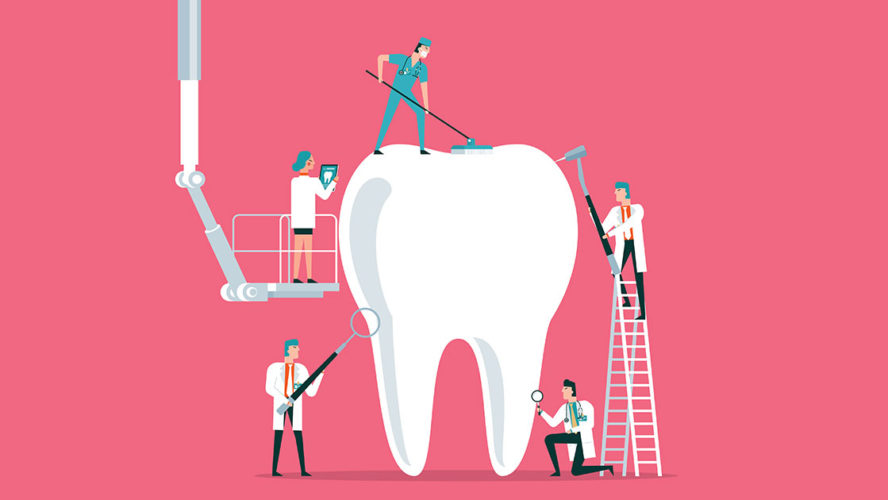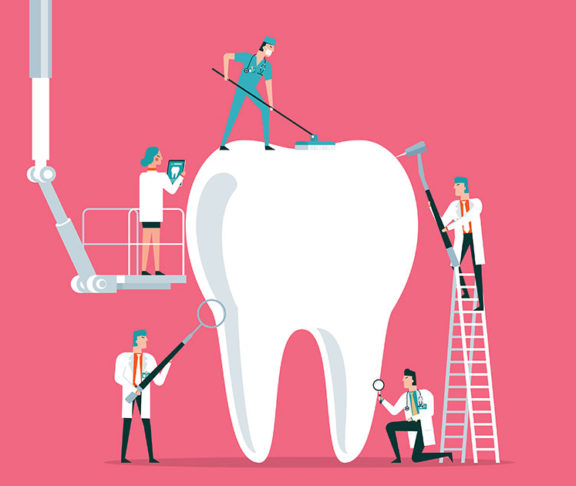It’s an especially exciting time to consider a career in oral healthcare, as various jobs in the field are forecast to see strong growth for many years.
Dental hygiene is expected to see 11% growth between 2020 and 2030, a rise greater than the national average, according to the U.S. Bureau of Labor Statistics.
Overall, the bureau “projects employment in most dental occupations to grow faster or much faster than the average for all occupations over the 2018–28 decade,” according to a BLS Career Outlook report. Three careers in oral health are among the 10 best jobs that pay $100,000 or more, according to a 2022 list compiled by U.S. News & World Report: oral and maxillofacial surgeon, orthodontist, and dentist.
Expanding horizons
In the United States, there are currently 70 accredited dental schools. Another two, including one in Puerto Rico, are awaiting accreditation from the Commission on Dental Accreditation, and at least three additional schools are in early stages of development. All of this activity on the academic front underscores the growing need for dental educators — a vital component of any discussion of careers in oral healthcare.
Perhaps more significantly, there is an expanding mindset within the broader healthcare system that rightly recognizes the crucial role that oral care plays in overall well-being. Various studies have detailed how the oral cavity serves as a window to the general health of a patient, and oral health professionals play a valuable role in screening for various diseases, including cancer. Increasingly, professionals in oral healthcare are welcomed as crucial members of a comprehensive and integrated healthcare team.
In fact, the BLS cites the oral-health link as one reason for its robust forecast for dental careers: “Demand for dental services is expected to increase as people recognize the link between oral health and overall health and as an aging population requires more dental work,” states the BLS Career Outlook report.
The vital role that oral healthcare professionals play in the well-being of our communities came into sharp relief during the COVID-19 pandemic, when the federal government authorized dentists and qualified dental students to administer vaccines. More than two dozen states acted on their own to make that happen.
Collectively, there is plenty to celebrate when considering the promise of careers in oral health. Dentists, dental educators, dental hygienists, dental therapists, dental technicians, dental assistants, and others are part of an esteemed healthcare field that enriches our lives.
Advancing diversity in healthcare
There is one area where we can — and must — do better: advancing diversity in the health professions, including oral care. Regrettably, diversity in the health professions lags diversity among the U.S. population as a whole. A growing body of research also suggests that medical care improves when healthcare professionals and patients share the same race or ethnicity. The problem is especially acute for men of color.
To address this challenge, the American Dental Education Association (ADEA) and key partners are taking a number of steps to turn the tide. In the report Slow to Change: HURE Groups in Dental Education, ADEA took a comprehensive review of dental school applicants and graduates among historically underrepresented racial and ethnic populations. They then issued a call to action for a collective effort across discipline, schools, industries, and other organizations to engage in honest conversations about race and to carefully review policies, practices, and systems so that we are truly opening the door to — and welcoming — students of color.
Additionally, ADEA has developed the ADEA Faculty Diversity Toolkit, a complimentary resource that highlights best practices, strategies, and model programs that postsecondary institutions can use to improve the recruitment and retention of historically underrepresented and marginalized faculty.
More recently, with the support of the Robert Wood Johnson Foundation, ADEA launched an initiative to draw more men of color into the health professions. In August, ADEA hosted a two-day summit to start identifying solutions that will aid in the recruitment, matriculation, retention, and graduation of historically underrepresented men in the health professions.
In many ways, our work is just starting, but we are poised for continued growth in the oral health professions. By tackling the challenges we face in diversity, we will wind up with even stronger professionals who can better serve their patients and communities.

